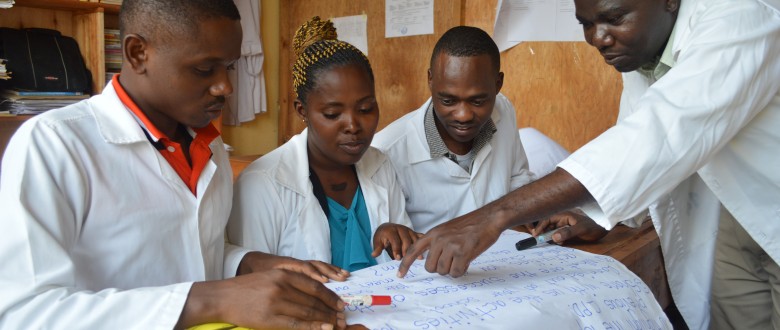
From separate silos to close collaborations: a joint op-ed for more mutual learning by Pauline Rose, Director at the Research for Equitable Access and Learning (REAL) Centre (University of Cambridge) and Sven Rooms, General Director at VVOB – education for development
The COVID-19 crisis reminds us of the importance of reliable data and robust evidence to inform the health choices we make, but also the choices in education. During school closures, how can appropriate forms of technology help to reach all learners, rather than only the lucky few? How can that technology be used to develop the skills that matter most for work and life?
When is it safe – for learners, for teachers and for their families and communities – to reopen schools? Which students have been left behind most? How can we help them catch up on their lost learning? How do we encourage and support teacher leadership and teacher effectiveness in these challenging times? And what about parent involvement?
Research and evidence can help provide answers to these questions
In our experience, this works best when researchers like the REAL Centre and implementers like VVOB come together to understand, apply and scale approaches informed by research – rather than working independently in separate silos.
A recent example we’d like to share is a collaboration between our organisations in Rwanda for the Leaders in Teaching initiative, funded by the Mastercard Foundation. Together with Laterite, the REAL Centre conducted phone surveys to understand the challenges that teachers and school leaders face during school closures.
The content of these phone surveys was informed by local organizations involved in the initiative, including VVOB, and will also shape these organisations’ ongoing activities. We are sharing findings with the Rwanda Education Board, and we hope this work will contribute to policy discussions on strategies and contingencies for reopening schools in Rwanda.
Using what we learned in past crises to respond better
As schools around the world are reopening, we must use the best available evidence to achieve learning outcomes and ensure learner wellbeing. The COVID-19 pandemic has resulted in unprecedented challenges for all of us: now more than ever we should make optimal use of the evidence gathered from research on previous education disruptions.
We know for instance, that it is fundamental to quickly resume educational activities, especially for the most marginalized children.
We also know that focusing only on students’ learning outcomes is insufficient, as mental and physical wellbeing are equally important, especially during and after disruptions.
Rigorous research helps us identify what works – and what doesn’t. Involving educational researchers should happen from the outset, not only in the evaluation process, but already at the design and formulation phase, and indeed throughout implementation.
Systematic reviews can help us better understand the potential for learning gains, critically appraise research studies, and synthesize findings. Rapid reviews allow us to quickly adapt and improve practice in the face of new challenges. Diverse quantitative and qualitative monitoring and evaluation techniques and sound analyses help us keep track of which groups benefit most from which education solutions.
The evidence base for what works in education has been growing and diversifying rapidly over the past decade. The available evidence has also become easier to access and analyze. For instance, the online African Education Research Database, developed by ESSA and the REAL Centre, has raised the visibility of African research, consolidated the evidence base for education policy and practice, and can inform future research priorities and partnerships.
Scaling up what works
Evidence clearly shows that COVID-19 has deepened a learning crisis that pre-dated the pandemic: Even before the pandemic, 53% of all children in low- and middle-income countries could not read and understand a short story by the time they finished primary school.
Problems at such a scale require solutions which can be brought to scale.
More than ever before, we need evidence to inform education innovations going to scale. Programmes such as Leaders in Teaching in Rwanda and Teaching at the Right Level in Zambia are now being successfully implemented at scale – thanks to a fruitful cross-fertilisation between implementers, researchers and government officials.
While no single education innovation will achieve the same results everywhere, an important first step is understanding how the innovation has worked in a certain context and how it can be adapted to other contexts and needs.
A good example of this are the assessment tools developed by the People’s Action for Learning (PAL Network). Continuously adjusting and adapting interventions in education is not always the easiest thing to do, but it is the right thing to do in order to solve the learning crisis.
Building partnerships to achieve better results
Our knowledge of what works, even in more challenging contexts, is increasing. This is a good time to consolidate existing evidence to better prepare us for future disruptions. Implementers of education reforms should open up their interventions to researchers, so that more timely, relevant and applicable research can be generated and shared.
The educational crisis of 2020 has seen stakeholders from across the board come together in new networks or strengthening existing ones. Within those collaborations, strong partnerships between educational implementers and researchers are an essential pre-condition for achieving better results for all children.
At VVOB and the REAL Center, we are happy to have embraced this new way of working together – and we welcome others to join us!




